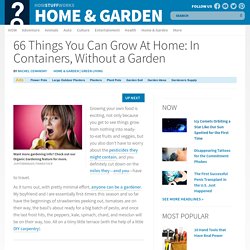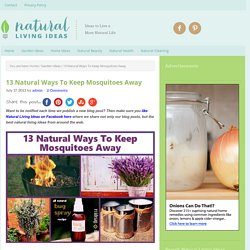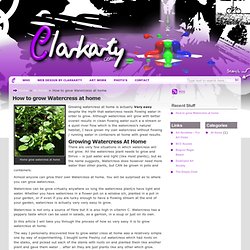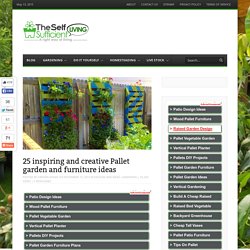

15 houseplants to improve indoor air quality. The Amazing Benefits of a Home Organic Aquaponics System. By Andy Whiteley Co-Founder of Wake Up World What is Aquaponics?

Aquaponics is an integrated aquaculture (growing fish) and hydroponic (growing soil-less plants) system that mutually benefits both environments. Aquaponics was essentially born out of hydroponics, which at the time made farming a lot easier. This process was associated with planting your veggies inside containers together with water. Thankfully, fertilizers and harmful chemicals are not required when setting up your own home organic aquaponics system. The below video features U.S. farmer, Will Allen from Growing Power, who has taken successful Aquaponics cultivation to the extreme. 66 Things You Can Grow At Home: In Containers, Without a Garden" Growing your own food is exciting, not only because you get to see things grow from nothing into ready-to-eat fruits and veggies, but you also don't have to worry about the pesticides they might contain, and you definitely cut down on the miles they—and you—have to travel.

As it turns out, with pretty minimal effort, anyone can be a gardener. My boyfriend and I are essentially first-timers this season and so far have the beginnings of strawberries peeking out, tomatoes are on their way, the basil's about ready for a big batch of pesto, and once the last frost hits, the peppers, kale, spinach, chard, and mesclun will be on their way, too. All on a tiiiny little terrace (with the help of a little DIY carpentry). WATCH VIDEO: World's Greenest Homes: Rooftop Garden If you're up to the challenge—and it really isn't much of one—growing your own food can be so rewarding. 13 Natural Ways To Keep Mosquitoes Away. Want to be notified each time we publish a new blog post?

Then make sure you like Natural Living Ideas on Facebook here where we share not only our blog posts, but the best natural living ideas from around the web. I’m sure everyone reading this right now has experienced the redness, the swelling and the uncontrollable itching that comes with a mosquito bite. It’s enough to ruin any barbecue or picnic! Many people turn to store bought insect repellents to keep mosquitoes away, but these insect repellents often contain a toxic pesticide that is dangerous to human health.
Home Remedies for the Garden « Central Coast Gardening. Poisonous Plants in the Home. Have no fear of growing plants in your home; most are perfectly safe.

But if you have inquisitive children and pets who may want to chew or crush plants, there are a few varieties to avoid: the handful of plants that can cause allergic skin irritations, stomach upsets, or worse. Some plants are more toxic than others. The good news is that most must be consumed in large quantities to cause any real damage. Often the bitter taste repels a child or pet and stops them from ingesting much of the plant. If you suspect that a child or pet has been poisoned by eating or touching a houseplant, call your doctor or veterinarian, go to an emergency room, or call the 24-hour National Capital Poison Center at 800-222-1222.
Use care when growing and displaying these common poisonous plants in your home. 12 Great Ways To Use Castile Soap. How to grow watercress at home. Home grow watercress at home Growing watercress at home is actually Very easy despite the myth that watercress needs flowing water in order to grow.

Although watercress will grow with better overall results in clean flowing water such a a stream or a quiet river flow which is the watercress’s natural habitat, I have grown my own watercress without flowing / running water in containers at home with great results. 225 best uses of pallets for home and garden. Your garden may be filled with all the eye candies like displacement of floral pots, benches, and vertical gardens, but is there something unique?

Don’t you want to have something that differentiates your garden from the rest? You can work this out by simply using the old pallets. You must have never thought about creating beautiful decors from the pallets that you have in the junkyard or storeroom. It is the right time to begin with some fun activities, which would certainly result in the exquisite and chic look. 7 Natural Uses For Baking Soda In The Garden.
Share Baking soda is a vital part of green cleaning and has so many uses in the house, but what about the garden.

Here are 7 ways to use it in the garden. 1. Make a Non-Toxic Fungicide Mix 4 teaspoons of baking soda and 1 gallon of water. 2. Powdery mildew is causing major problems with impatiens this year, but also can be a problem for other plants, like lilacs, cucumbers, squash and zinnias. Spray Recipe: 1 tablespoon of baking soda, 1 gallon of water, 1 tablespoon of vegetable oil, 1 tablespoon of dishwashing liquid Mix all the ingredients together and spray plants weekly. 3. Mix in 1 gallon of water, 4 teaspoons baking soda, 1 teaspoon biodegradable soap. 4. Pour or sweep baking soda in a thick layer into cracks on a sidewalk or patios. 5. Mix equals parts flour and baking soda and dust plants (cabbage, broccoli, kale) being eaten by cabbage worms. 6.
Simply wet the crabgrass, pour a heavy dusting of baking soda on the weed. 7. Source: Plant Care Today.